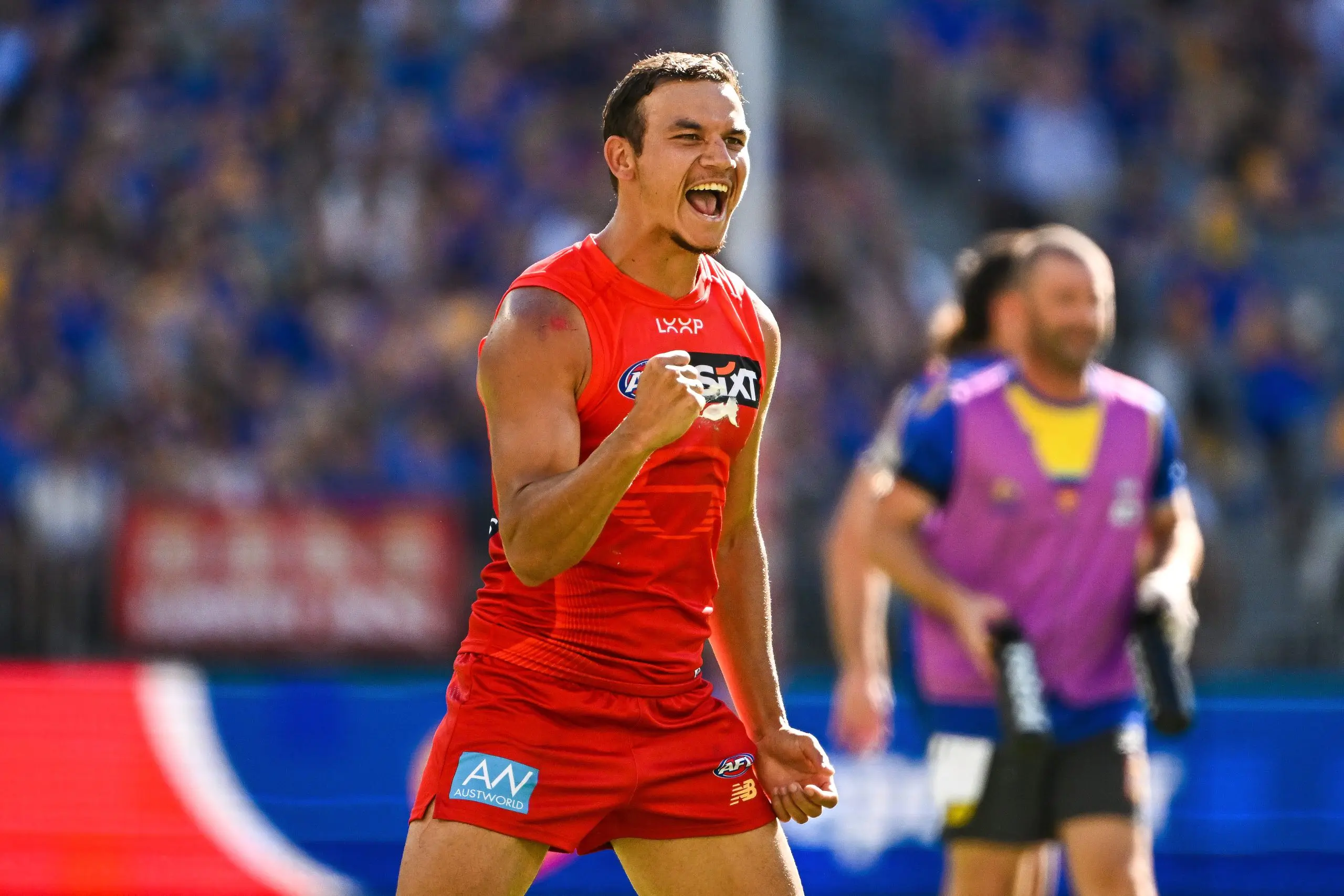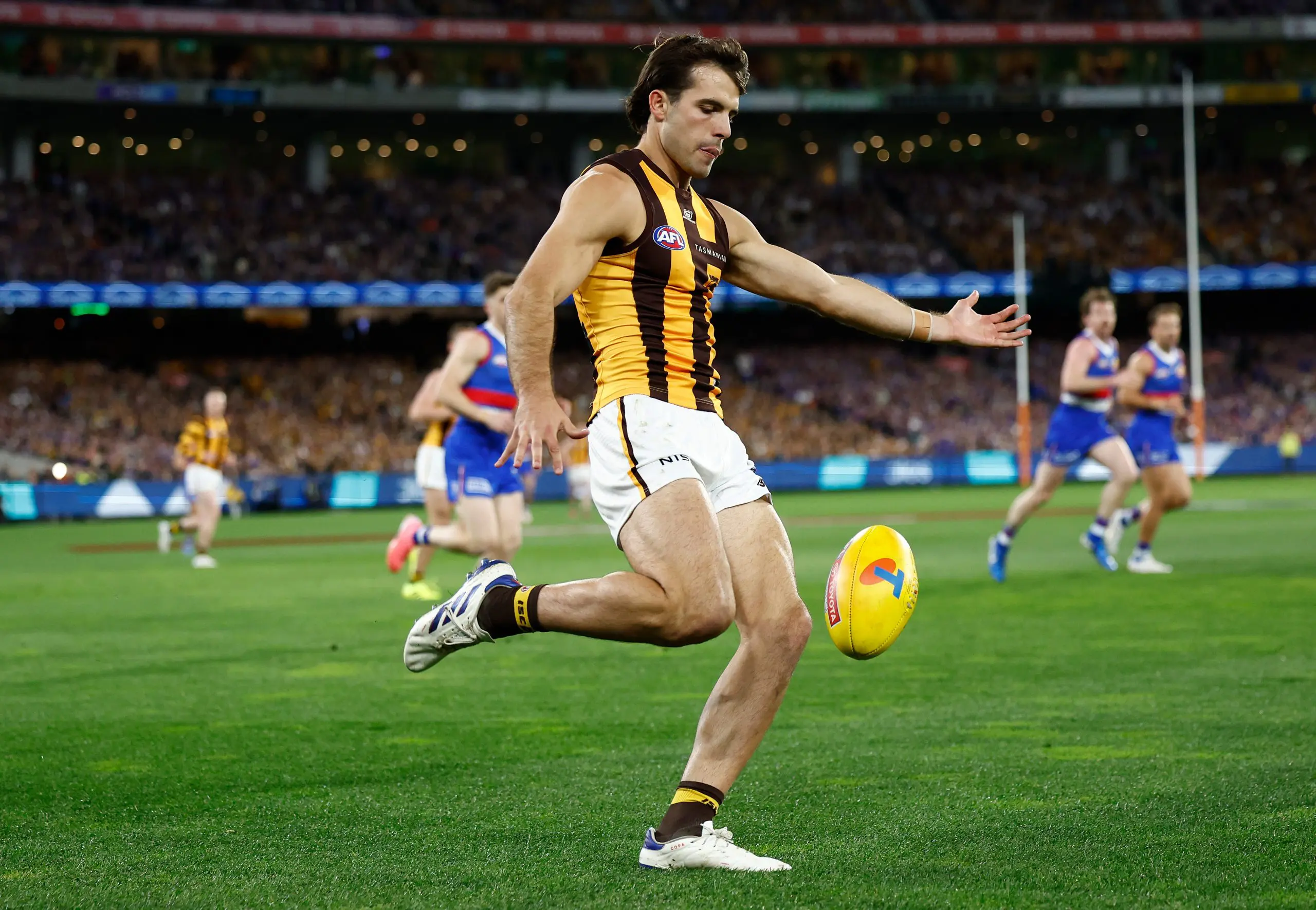THE AFL returns with a sharp turnaround after the conclusion of Round 6 on Easter Monday, with another blockbuster long weekend of football action ahead.
With multiple grudge matches and marquee clashes set to bring the best out of most sides this week, strong output in specific statistical categories could be the factor that places the scoreboard in your club's favour.
So, let's dive into what each team should focus on heading into their next match.
Melbourne vs Richmond
Scores from stoppage
If Melbourne is to alleviate even more pressure from their shoulders, there's no better place to do so than a back-to-back win in the Anzac Day Eve blockbuster.
Melbourne's win over Fremantle in Round 6 came after a vintage display in the midfield, with the Demons generating the bulk of their scores from stoppage situations.
The Demons not only won the clearance count for the first time this season, they also utilised their clearances with efficiency, allowing for their best scoring conversion rate from inside 50 entries this season.
However, in the Demons' first five losses of the year, the club struggled in this area that is usually their strength. Melbourne averages just 30.7 points from stoppages per game, ranked 16th in the competition.
If Richmond can match the Demons in the middle, they could also bank back-to-back wins in their own right. While Melbourne ranks 16th for scores from stoppage, they rank eighth for scores from centre bounce. Richmond may have lost the overall clearance count against Gold Coast, but they won the ball from the centre circle, and a similar effort could hinder the Demons' ability to score on Thursday night.
Collingwood vs Essendon
Contested Possessions
Not much matters in a grudge match, especially in the Magpies and Bombers rivalry. Steeped in deep history, the 30th Anzac Day match is sure to bring fireworks and another tight contest.
In what is expected to be another fiery encounter between the two clubs, winning the hard ball will set the tone for the match.
Currently, 39.7 per cent of Collingwood's possessions are contested, which ranks sixth in the competition, however, Essendon prefer the outside game, averaging just 34.5 per cent of their possessions as contested.
It reads as a potential aspect Collingwood can expose on Friday, and one Essendon should aim to better if they are to pull off the upset victory.

Fremantle vs Adelaide
Marks
What was a typical indicator of Fremantle's success in 2024 has seen a stark change this season, with Fremantle averaging the third-fewest marks in the AFL.
It comes after last season's efforts saw them rank eighth for marks per game, with the Dockers winning over three-quarters of their games when they recorded more marks than the AFL average.
Perhaps their inconsistent start to the season has reflected this change, and a concerted focus on getting back to the basics in their game plan could be the key to returning to their exciting form of yesteryear.
Meanwhile, the Crows' strong start to the year has been off the back of regular marking chains, as they currently rank fourth for marks per game with 93.5.
When Adelaide's attack is humming, they clunk marks across the ground - whether it be through marks kickstarting rebounds from defence or contested marks inside 50, the Crows have got a system that relies heavily on marking.
In their ugly, gritty win over GWS, the Crows recorded just 76 marks, and while they got the result, it was Adelaide's worst goal efficiency from inside 50s this season, highlighting how the Giants stripped away their ability to find open targets, impacting their usual high-scoring output.

St Kilda vs Brisbane
Opposition transition from defensive 50 to forward 50
This statistic is a bit of a tongue-twister, and while it sounds sexy, it is a telling indicator of Brisbane's current issues.
After five comeback wins to start the season, Collingwood exposed Brisbane's flaws on Thursday night and revealed the 5-0 start to the season wasn't as perfect as it seemed.
Lachie Neale conceded at a Tuesday press conference that the Lions' contested work and defensive structure had not been quite up to scratch, and their disappointing effort on Thursday solidified that.
However, the Lions have the cavalry to amend their contested possessions at the flick of a switch, but their defence remains a curious watch for Round 7.
Brisbane allow nearly 23 "transition chains" by their opponent from defensive 50 to the forward 50 per game, ranked 11th in the competition.
These kicking chains include kick-in chains, all clearances, and intercepts with at least one disposal in the chain.
In other words, the Lions have been far too easy to rebound against in transition. Last year, Brisbane conceded the fifth-fewest of these transitions in the competition.
Unsurprisingly, how many points Brisbane concede goes hand-in-hand with this metric. Last year, the Lions were the second stingiest side; this year, they rank tenth for points against.
Preventing easy transitions will be vital against St Kilda, who average 116.5 points in their wins at Marvel Stadium this season. However, the Bulldogs proved that it can be prevented, and the Lions will be aiming for the same this Saturday.

Port Adelaide vs North Melbourne
Rebound 50s
Port Adelaide's turn in form has developed from improving rebounding transitions off halfback.
The decision to move Connor Rozee into a halfback flanking role has been a masterstroke by Ken Hinkley in his final season, with Rozee producing some of his best performances of his career to date.
The stats reflect this move, with the Power recording 41.2 rebound 50s per game, while Rozee has been averaging 2.8 per game as well as 5.2 inside 50s.
However, North Melbourne has been fairly strong in this area too, averaging 40.3 per game. Unfortunately, the Roos allow the most transitions from half-back to half-forward in the league, presenting a lucrative opportunity for Port Adelaide to win three in a row.
GWS Giants vs Western Bulldogs
Rebound 50s
Rebound 50s will also be crucial for this modern rivalry's matchup on Saturday night.
The Giants average the most rebound 50s per game by a considerable margin, 48.3 per game, which is nearly four more than the second-best.
Alarmingly for the Bulldogs, they concede the fourth-most rebound 50s per game, presenting something the Giants can exploit. GWS have been able to rebound 84.1 per cent of opposition inside 50 entries this year, and with the Bulldogs' current leaky trend, a similar figure may continue on Saturday and set the Giants up for victory.
Gold Coast vs Sydney
Transition from defensive 50 to forward 50
The Suns and Swans have both been two premier sides in this metric respectively, however Gold Coast can claim the highest honours.
Despite their shock loss to Richmond, Gold Coast have assumed a nearly flawless start to the 2025 campaign, and it's largely been off the back of their transition work.
Evidently, the recruits of John Noble and Daniel Rioli have paid off in spades, as the Suns record 31.6 untouched transitions from their defensive 50 to forward arc per game, the greatest average in the competition.
Sydney is still one of the top sides in this metric, but not to the scale of Gold Coast, averaging 23.8 transition chains from their defensive 50.
It has been vital in beginning counterattacks for the Swans, but their disposal efficiency has been a letdown and a potential reason as to why their formline has been inconsistent. Sydney averages a disposal efficiency of 71.9 per cent, ranked inside the bottom five of all AFL clubs this season.
If the Swans are to beat Gold Coast at their People First Stadium fortress, they'll have to match the Suns' attacking transitions on Sunday.

Carlton vs Geelong
Contested Possessions
The midfield battle will be an intriguing watch between these two sides on Sunday afternoon.
The Blues' midfield, backed in by in-form George Hewett, Patrick Cripps and Sam Walsh, has assisted the club in averaging a league-leading 146.7 contested possessions per game.
Geelong's midfield, consisting regularly of Bailey Smith, Max Holmes and Tom Atkins, average 137.2 per game, ranked fourth in the league.
With both sides ranking in the top six of clubs for points scored from stoppages, winning the contested ball at clearance will be vital to victory and shape the scoreline this weekend.
Hawthorn vs West Coast
Kicking Efficiency
The Hawks shot themselves in the foot against the Cats on Easter Monday, and a heightened focus on foot skills will be an undoubted focus at training this week.
Hawthorn, known for their usual disposal efficiency, have a kicking efficiency of 68.2 per cent this year, which is ranked third in the competition.
Meanwhile, the Eagles average an AFL-worst efficiency of 62 per cent, which may only help Hawthorn's cause, with the Hawks averaging 65.3 intercept possessions this season, ranked sixth.















